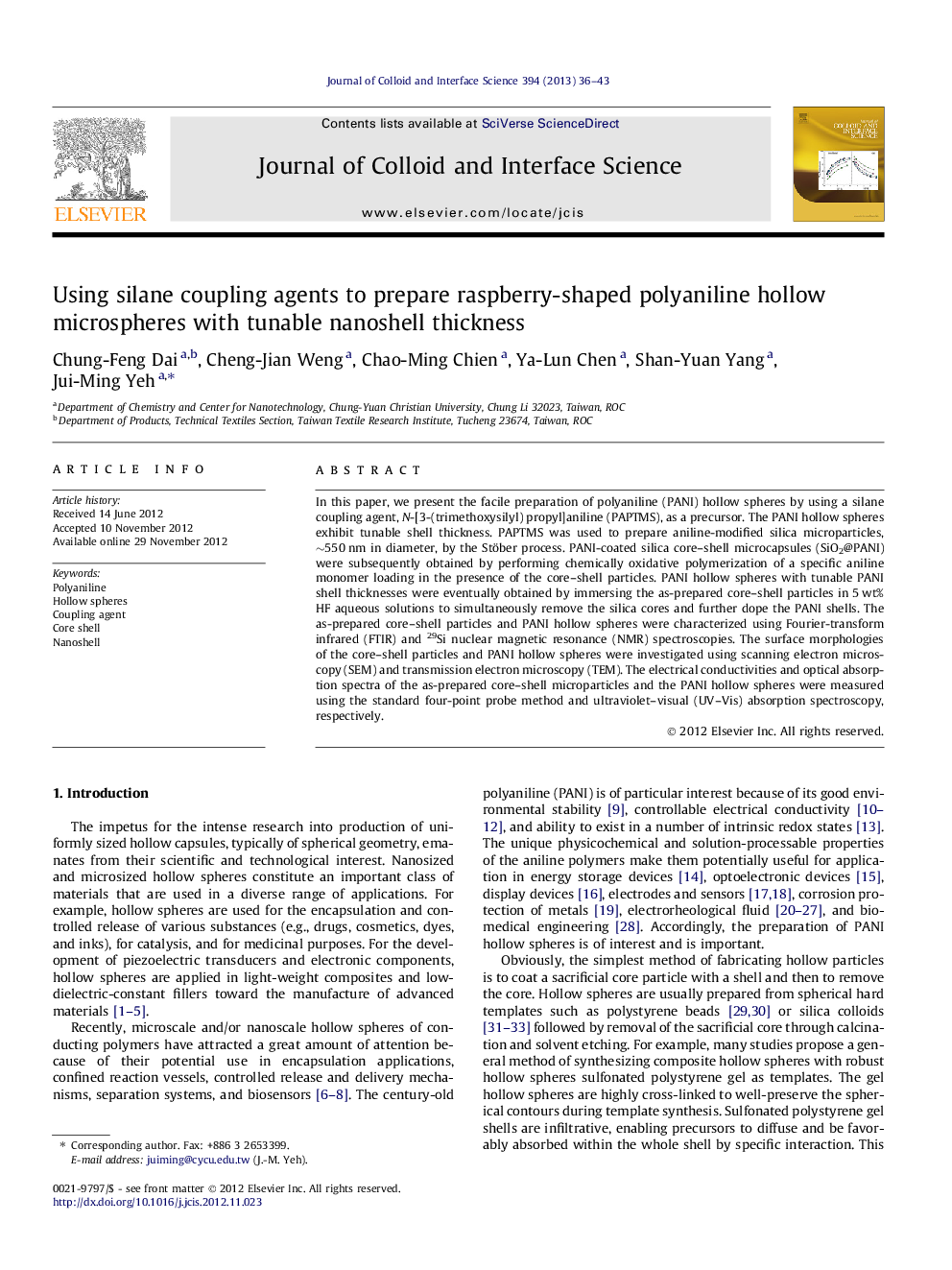| Article ID | Journal | Published Year | Pages | File Type |
|---|---|---|---|---|
| 607741 | Journal of Colloid and Interface Science | 2013 | 8 Pages |
In this paper, we present the facile preparation of polyaniline (PANI) hollow spheres by using a silane coupling agent, N-[3-(trimethoxysilyl) propyl]aniline (PAPTMS), as a precursor. The PANI hollow spheres exhibit tunable shell thickness. PAPTMS was used to prepare aniline-modified silica microparticles, ∼550 nm in diameter, by the Stöber process. PANI-coated silica core–shell microcapsules (SiO2@PANI) were subsequently obtained by performing chemically oxidative polymerization of a specific aniline monomer loading in the presence of the core–shell particles. PANI hollow spheres with tunable PANI shell thicknesses were eventually obtained by immersing the as-prepared core–shell particles in 5 wt% HF aqueous solutions to simultaneously remove the silica cores and further dope the PANI shells. The as-prepared core–shell particles and PANI hollow spheres were characterized using Fourier-transform infrared (FTIR) and 29Si nuclear magnetic resonance (NMR) spectroscopies. The surface morphologies of the core–shell particles and PANI hollow spheres were investigated using scanning electron microscopy (SEM) and transmission electron microscopy (TEM). The electrical conductivities and optical absorption spectra of the as-prepared core–shell microparticles and the PANI hollow spheres were measured using the standard four-point probe method and ultraviolet–visual (UV–Vis) absorption spectroscopy, respectively.
Graphical abstractFigure optionsDownload full-size imageDownload high-quality image (86 K)Download as PowerPoint slideHighlights► Conducting SiO2@PANI capsules and PANI hollow spheres had been prepared. ► The shell thicknesses were controlled by changing the molar ratio of aniline. ► By increasing the PANI thickness, conductivity and electroactivity was enhanced.
